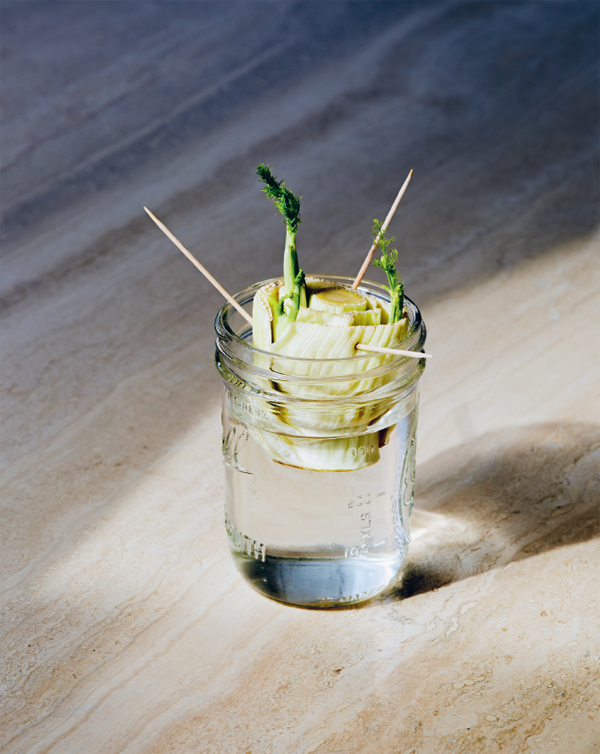

If you have been lucky enough to take holidays in the Mediterranean region, you might have noticed wild fennel growing in its natural habitat at the sides of country lanes. Its yellow flowers and feather-like leaves make it distinctive once you know what to look for. The plant’s characteristic anise scent might even give you flashbacks to sambuca shots on the dance floor.
Fennel has been used as food and medicine for generations. The British Library holds a 10th-century manuscript of the ‘Nine Herbs Charm’, a recipe for a potion used to combat the effects of infections in Anglo-Saxon England. It includes a poem that was chanted during the preparation of this remedy. Sweet-smelling fennel is one of the nine herbs used in the charm.
Fennel is a wonderful choice to regrow at home, not least because it looks so interesting as it grows. The plant’s leaves are first to reappear from a fennel cutting, and these can be snipped off at any point and used in the kitchen. You could use your newly regrown fennel plants in a delicious cooked fennel, cannellini bean and blue cheese summer salad.
| Growing speed | Medium |
| Difficulty level | Medium |
| Position | Sunny/indirect |
| Temperature | Medium |
| Use | Edible |
| Container | Medium |
You will need
Sharp knife
Toothpick or skewers
Wide-necked glass
Fresh water
Kitchen scissors
Potting compost (optional)
Plant pot with drainage holes and drip tray (optional)

To regrow fennel
| 1 | When you use fennel in the kitchen, be sure to slice off the root section and retain it, along with about 5cm (2in) of the adjoining bulb itself. |
| 2 | It’s important that the majority of the fennel bulb remains dry when you regrow it. Take three toothpicks and position them equally around the circumference of your bulb, about 1cm (½in) from the top of the cutting itself, pushing them into the bulb. |
| 3 | Position your cutting (root area downwards) over the top of a wide-brimmed glass. A pint glass or beaker would work well. The toothpicks should rest on the rim of the glass, acting as a brace to hold the cutting in place. |
| 4 | Fill the glass with just enough cool, clean water to submerge only the root of your cutting. The rest of the bulb should be above water. |
| 5 | Place the glass on a bright windowsill, but not one that gets too much direct sunlight. |
| 6 | Remember to refresh the water at least every other day to keep your cutting clean and healthy. |
| 7 | Within days you will see small fennel shoots and leaves appearing from the cutting. Let these grow to your desired length before trimming with scissors and using when cooking. |

Tips
 If your fennel starts to dry out, try spraying it with fresh water to increase humidity levels.
If your fennel starts to dry out, try spraying it with fresh water to increase humidity levels.
 The tiny feathery leaves of fennel can be used when making pesto to add freshness.
The tiny feathery leaves of fennel can be used when making pesto to add freshness.
 Serve baked fennel with gorgonzola cheese, or use it to make a flavour-packed clam and fennel risotto.
Serve baked fennel with gorgonzola cheese, or use it to make a flavour-packed clam and fennel risotto.